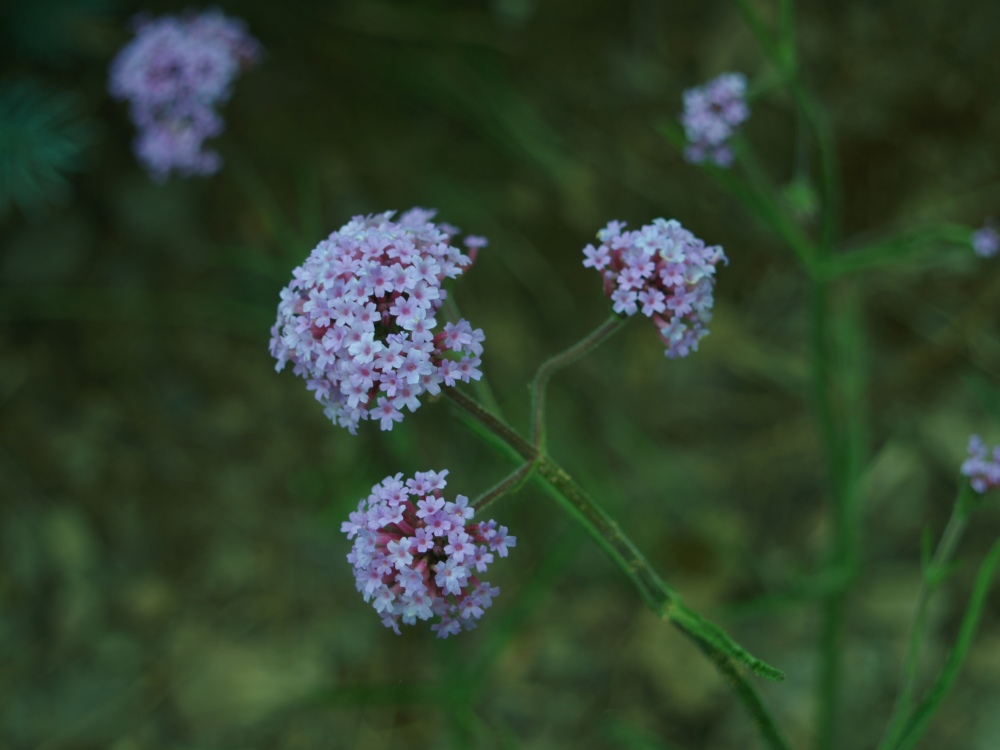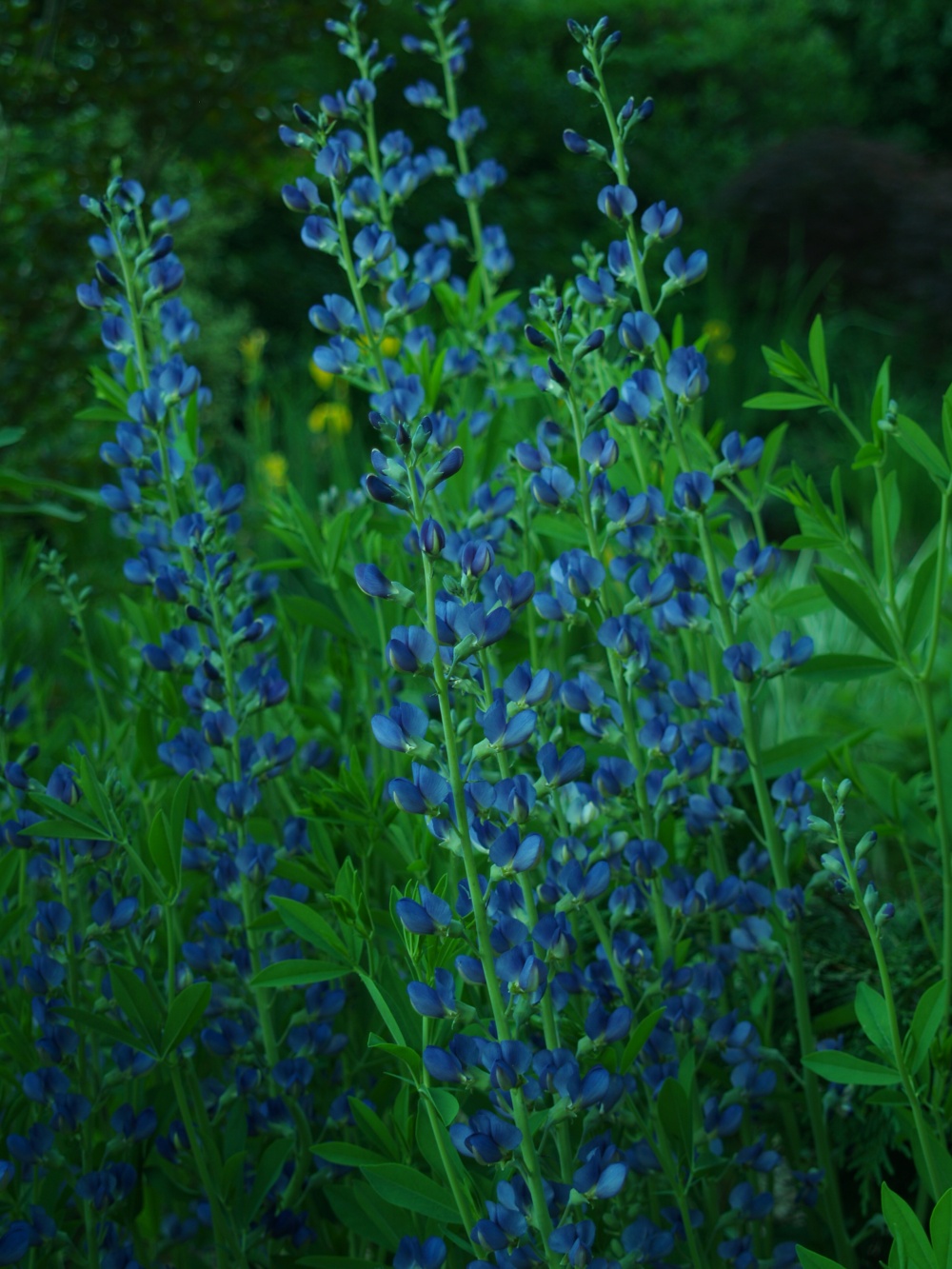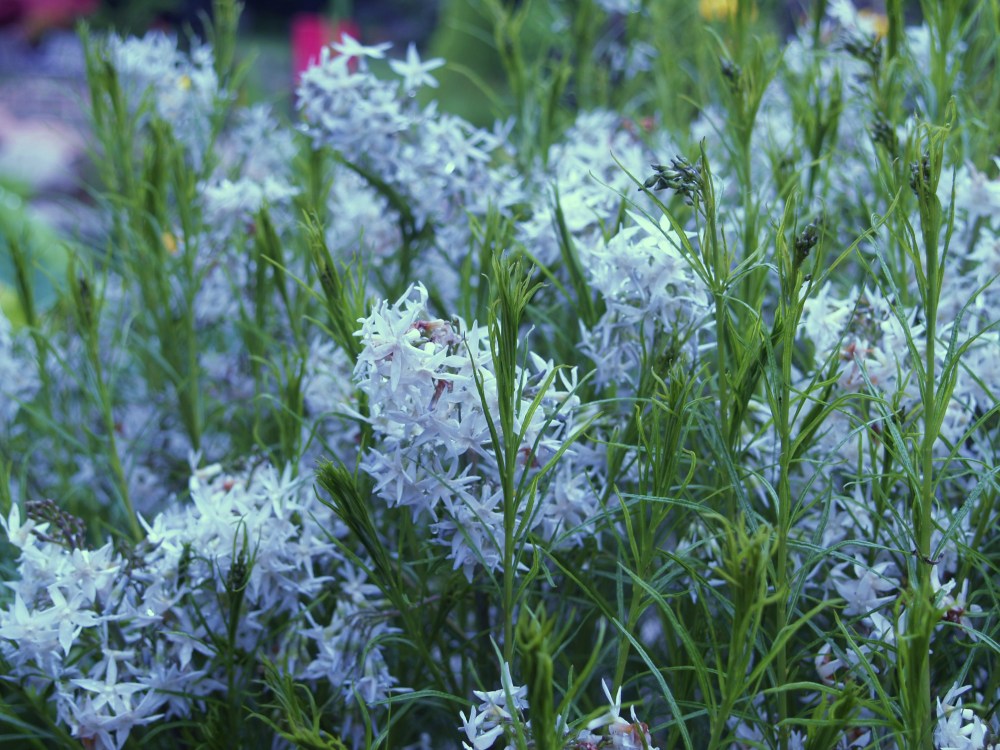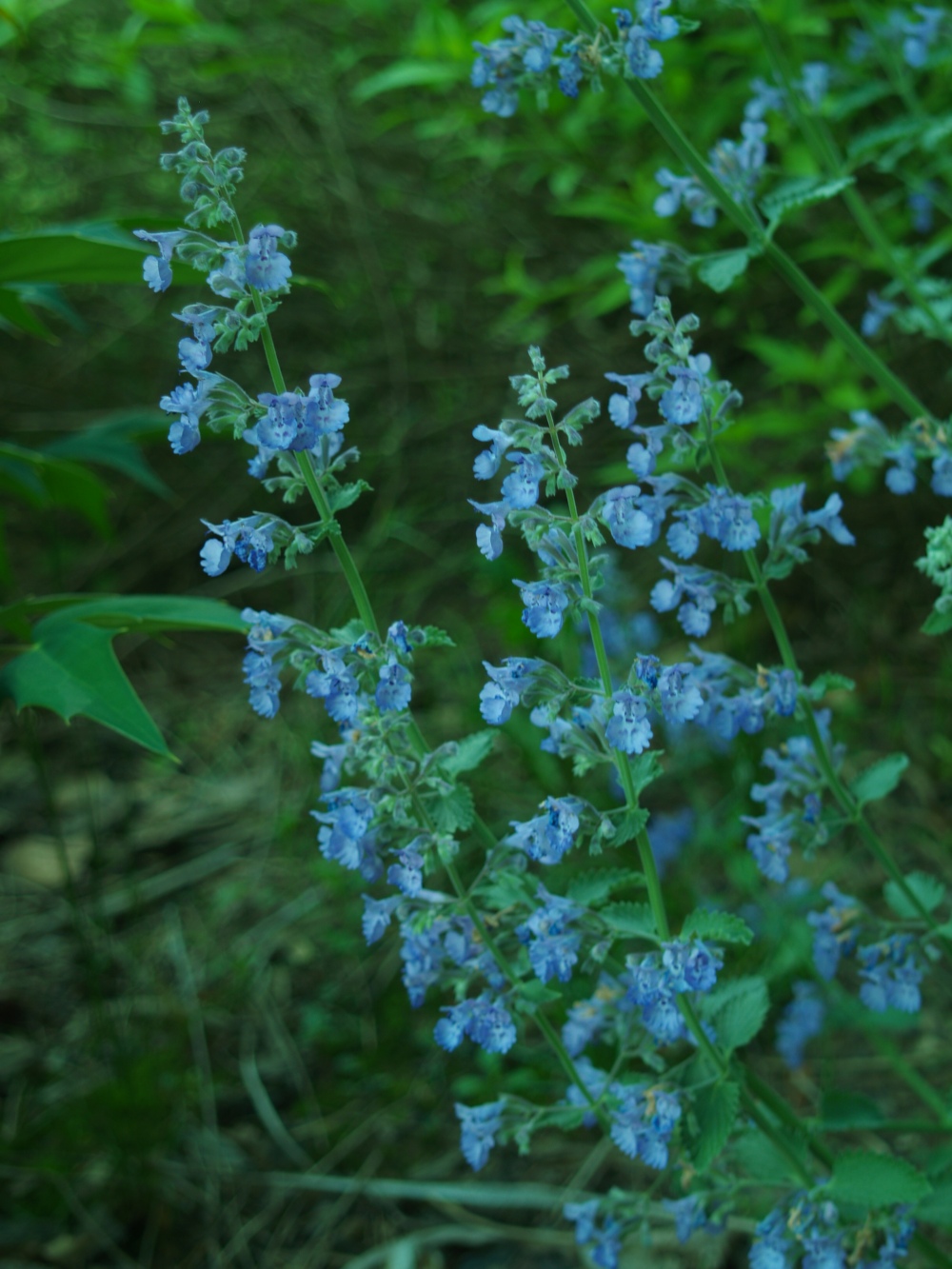I must hurry along to catch up on the month’s blooms while it’s still May. As I finished up on flowering shrubs last week ninebark, elderberry, and Arrowwood viburnum popped into bloom, and it seems a pleasantly impossible task for me to keep up with the month’s flowers.
The small purple flowers of tall verbena (Verbena bonariensis, below) don’t make a big show, but this tall, lanky perennial is somehow quite captivating. It is best planted beside stout, bushy perennials or shrubs that the tall, almost leafless stems can lean on for support. If the flowers hover slightly above, swaying in the breeze, the result is splendid. Without support the stems often flop under the weight of a spring shower, and inches from the mud the blooms are not nearly as attractive.
Tall verbena is a rambunctious seeder, so the gardener must be prepared for a number of volunteers in any sunny space in the vicinity (though these are easily controlled). In the moderate climate of the mid Atlantic it will return dependably each spring, though it is impossible for me to distinguish seedlings from the original plants. With too much shade tall verbena slowly fades and eventually disappears, so it is far from indestructible. Now is the second time that it has fallen victim to encroaching shade so that I’ve reintroduced it into the garden; this time in as sunny a spot as I have but between evergreen shrubs so that it can sprout up annually without notice until the flowers appear.
I suspect that ever spreading shade is a problem in many gardens, and since I’ve planted dozens of small trees over twenty four years it should not be surprising that some sun loving perennials decline and must occasionally be replaced. Several clumps of another tough as nails perennial, false indigo (Baptisia australis, above) have diminished in recent years beside wide spreading shrubs, but in spots where the sun shines through they are as vigorous as ever. Baptisia asks for little except a bit of sun and dry soil, and before shade crept in the clumps had grown impressively in very poor, rocky soil that was excavated when the large koi pond was dug.
In a similar circumstance, Blue Star (Amsonia hubrichtii) has grown into a fine clump. It seems to tolerate a bit more shade, so I’ve planted a few more where the dense, but delicate foliage will fill areas between shrubs. The pale blue flowers are nice enough for a short period, but it is the foliage that is the main attraction. In autumn, the foliage turns a soft, glowing yellow that is simply superb.
In a nearby neighborhood a mass planting of Catmint (Nepeta × faassenii ‘Walker’s Low’, above) is quite marvelous in late May, but in my garden they have been shoved behind and between where space allowed, afterthoughts that are appreciated too little. I suppose there is not enough space in the garden for everything to be planted up front, but catmint is one that deserves a better lot. Fortunately, there are enough treats in the garden to assuage my guilt in paying too little attention to the placement of this fine perennial.
The yellow foliage of ‘Sweet Kate’ spiderwort (Tradescantia x andersoniana ‘Sweet Kate’, above) is brightest in May, and though this fades through the summer the contrast of blue flowers and yellow foliage is delightful. The grass like foliage of spiderworts is a favorite of deer in my neighborhood, so I must carefully spray deer repellent to prevent them from being chewed to the ground. By late spring the foliage is often in need of rejuvenation (so am I), and deer are up to the task if given the opportunity. Spiderwort grows back quickly, so it’s a neighborly gesture to throw the deer a bone on occasion.
Thanks for the wonderful photos of all the blue flowers. So cooling before the big splash of hot colored summer annuals. I like “Sweet Kate” also and was really impressed with the size of spiderworts this year. Perhaps all the rain and cooler days. Speaking of yellow foliage ,my “Gold Heart” dicentra has gone mad and one plant has a spread of about 5 feet. Last year the foliage lasted most of the summer; quite welcome and different than it’s ephemeral green leafed relatives (not the natives of course).
I’m glad to learn the amsonia foliage has such nice fall color. I bought several this spring and thought the delicate light blue flowers were reward enough for growing this lovely native.
I will have to try the yellow leafed dicentra. I still recall my green leafed ones dying out in August in my first garden thirty five years ago. That’s a long time to hold a grudge.